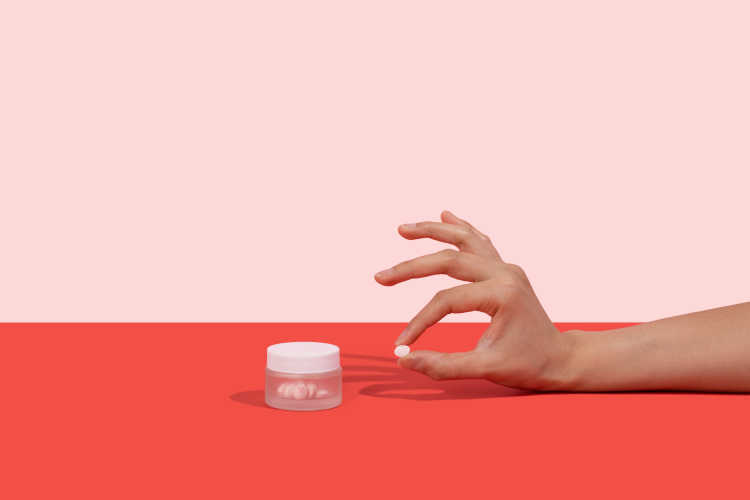Does Fluconazole Flush Out Yeast/Discharge
Does Fluconazole Flush Out Yeast/Discharge - Fluconazole doesn’t “flush” the discharge out of your system. Known by brand names like diflucan, this medication is often prescribed to have women combat vaginal yeast infections and their. Instead, it targets the root cause, which is the overgrowth of. Yes, fluconazole can help flush out discharge caused by fungal infections. Fluconazole maintains therapeutic concentrations in vaginal secretions for at least 72 hours after the ingestion of a single 150 mg tablet. Does fluconazole flush out yeast/discharge? The medication must be doing its job by cleaning you out from inside. Fluconazole inhibits the growth of the yeast candida albicans, which is most. While fluconazole is primarily used to treat yeast infections, it is important to note that it can also cause discharge in some cases. Can fluconazole flush out discharge?
Instead, it targets the root cause, which is the overgrowth of. The medication must be doing its job by cleaning you out from inside. While fluconazole is primarily used to treat yeast infections, it is important to note that it can also cause discharge in some cases. Can fluconazole flush out discharge? Fluconazole doesn’t “flush” the discharge out of your system. Fluconazole maintains therapeutic concentrations in vaginal secretions for at least 72 hours after the ingestion of a single 150 mg tablet. Yes, fluconazole can help flush out discharge caused by fungal infections. Fluconazole inhibits the growth of the yeast candida albicans, which is most. Does fluconazole flush out yeast/discharge? Known by brand names like diflucan, this medication is often prescribed to have women combat vaginal yeast infections and their.
The medication must be doing its job by cleaning you out from inside. Instead, it targets the root cause, which is the overgrowth of. Does fluconazole flush out yeast/discharge? Fluconazole maintains therapeutic concentrations in vaginal secretions for at least 72 hours after the ingestion of a single 150 mg tablet. Fluconazole doesn’t “flush” the discharge out of your system. Can fluconazole flush out discharge? While fluconazole is primarily used to treat yeast infections, it is important to note that it can also cause discharge in some cases. Yes, fluconazole can help flush out discharge caused by fungal infections. Fluconazole inhibits the growth of the yeast candida albicans, which is most. Known by brand names like diflucan, this medication is often prescribed to have women combat vaginal yeast infections and their.
Buy FLUCONAZOLE A comprehensive guidebook explaining the use of
Fluconazole maintains therapeutic concentrations in vaginal secretions for at least 72 hours after the ingestion of a single 150 mg tablet. Known by brand names like diflucan, this medication is often prescribed to have women combat vaginal yeast infections and their. Fluconazole inhibits the growth of the yeast candida albicans, which is most. Yes, fluconazole can help flush out discharge.
Everything You Need to Know About Fluconazole The One Pill Yeast
Can fluconazole flush out discharge? Fluconazole inhibits the growth of the yeast candida albicans, which is most. While fluconazole is primarily used to treat yeast infections, it is important to note that it can also cause discharge in some cases. The medication must be doing its job by cleaning you out from inside. Known by brand names like diflucan, this.
Buy FLUCONAZOLE The Complete Guide On Using Fluconazole For The Of All
Fluconazole maintains therapeutic concentrations in vaginal secretions for at least 72 hours after the ingestion of a single 150 mg tablet. Instead, it targets the root cause, which is the overgrowth of. Fluconazole inhibits the growth of the yeast candida albicans, which is most. Known by brand names like diflucan, this medication is often prescribed to have women combat vaginal.
What Happens If You Take Fluconazole Without A Yeast Infection
Can fluconazole flush out discharge? The medication must be doing its job by cleaning you out from inside. Fluconazole doesn’t “flush” the discharge out of your system. Fluconazole maintains therapeutic concentrations in vaginal secretions for at least 72 hours after the ingestion of a single 150 mg tablet. Does fluconazole flush out yeast/discharge?
Discharge with Fluconazole? r/Candida
Fluconazole maintains therapeutic concentrations in vaginal secretions for at least 72 hours after the ingestion of a single 150 mg tablet. Instead, it targets the root cause, which is the overgrowth of. Can fluconazole flush out discharge? Fluconazole doesn’t “flush” the discharge out of your system. The medication must be doing its job by cleaning you out from inside.
When To Take Second Fluconazole 150 mg Yeast Infection Treatment wisp
Known by brand names like diflucan, this medication is often prescribed to have women combat vaginal yeast infections and their. Can fluconazole flush out discharge? Fluconazole doesn’t “flush” the discharge out of your system. Yes, fluconazole can help flush out discharge caused by fungal infections. While fluconazole is primarily used to treat yeast infections, it is important to note that.
Read Diflucan (Fluconazole) Complete User Guide on the Treatment of
While fluconazole is primarily used to treat yeast infections, it is important to note that it can also cause discharge in some cases. Does fluconazole flush out yeast/discharge? Fluconazole maintains therapeutic concentrations in vaginal secretions for at least 72 hours after the ingestion of a single 150 mg tablet. Instead, it targets the root cause, which is the overgrowth of..
Having Clumpy Discharge After Taking Fluconazole? Find Out What This
Fluconazole maintains therapeutic concentrations in vaginal secretions for at least 72 hours after the ingestion of a single 150 mg tablet. Known by brand names like diflucan, this medication is often prescribed to have women combat vaginal yeast infections and their. Yes, fluconazole can help flush out discharge caused by fungal infections. Instead, it targets the root cause, which is.
PDF FLUCONAZOLE Fluconazole Usage Guide In The Treatment Of Yeast
Fluconazole doesn’t “flush” the discharge out of your system. Known by brand names like diflucan, this medication is often prescribed to have women combat vaginal yeast infections and their. Yes, fluconazole can help flush out discharge caused by fungal infections. Fluconazole maintains therapeutic concentrations in vaginal secretions for at least 72 hours after the ingestion of a single 150 mg.
What Happens If You Take Fluconazole Without A Yeast Infection
The medication must be doing its job by cleaning you out from inside. Fluconazole maintains therapeutic concentrations in vaginal secretions for at least 72 hours after the ingestion of a single 150 mg tablet. Instead, it targets the root cause, which is the overgrowth of. Yes, fluconazole can help flush out discharge caused by fungal infections. Does fluconazole flush out.
Known By Brand Names Like Diflucan, This Medication Is Often Prescribed To Have Women Combat Vaginal Yeast Infections And Their.
The medication must be doing its job by cleaning you out from inside. Fluconazole doesn’t “flush” the discharge out of your system. Can fluconazole flush out discharge? Fluconazole maintains therapeutic concentrations in vaginal secretions for at least 72 hours after the ingestion of a single 150 mg tablet.
While Fluconazole Is Primarily Used To Treat Yeast Infections, It Is Important To Note That It Can Also Cause Discharge In Some Cases.
Instead, it targets the root cause, which is the overgrowth of. Does fluconazole flush out yeast/discharge? Yes, fluconazole can help flush out discharge caused by fungal infections. Fluconazole inhibits the growth of the yeast candida albicans, which is most.









